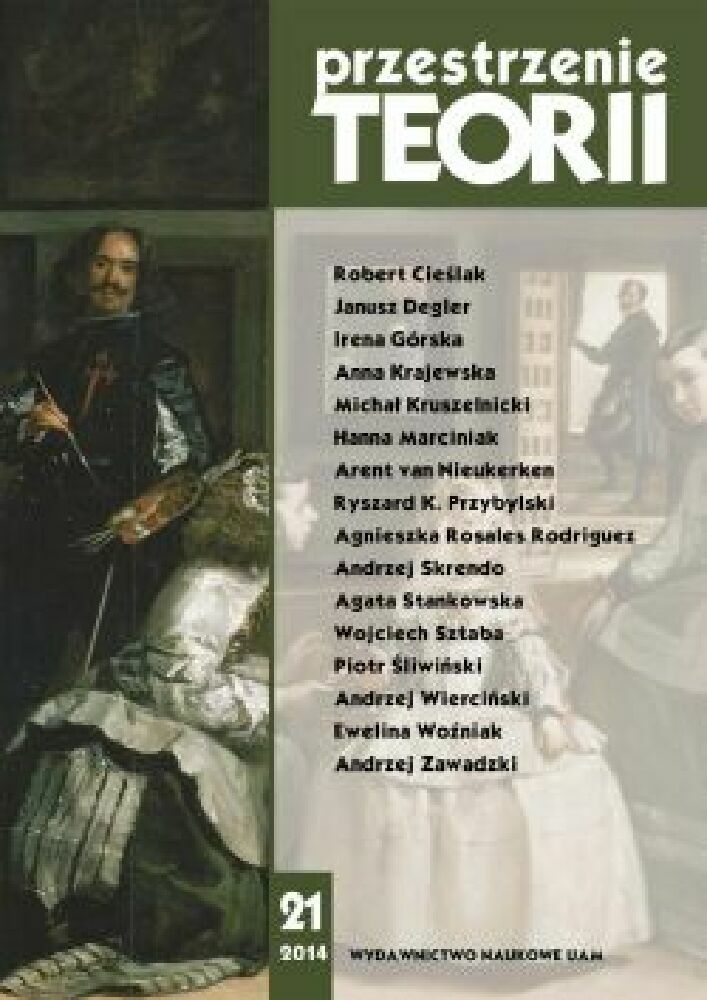Abstrakt
The purpose of this article is to present Tadeusz Różewicz as a poetic portraitist. Faces very often appear in the poet’s works and they play a special role there. The methods that are used to construct them can be grouped into four main categories: 1) a face as a performing subject, 2) a face as an object, 3) a face as a static construct, and finally 4) a face as an element, or metonymy, of human existence and entanglement with reality. In Różewicz’s poetry the human face is material and a mirror, but also a universal symbol of the human condition. These faces are usually distorted, decaying, and blurred. They symbolize the disintegration of the world in which human beings have to live. For Różewicz a face is the most condensed image of humanity and an equivalent of a substance in which every external stimulus leaves its mark. The way of using faces as a material and the process of disintegration that is described in detail constitute a dramatic and performative action which implements the objectives of fluid aesthetics, thus showing the moments of transition from meaning to nothingness and the process of erasing meaning.Bibliografia
K. Wyka, Różewicz parokrotnie, Warszawa 1977.
T. Różewicz, Twarze, [w:] tenże, Proza, Wrocław 1973.
E. Levinas, Etyka i nieskończony: rozmowy z Philipp’em Nemo, przeł. B. Opolska- Kokoszka, Kraków 1991.
J. Potkański, Sobowtór. Różewicz a psychoanaliza Jacques’a Lacana i Melanii Klein, Warszawa 2004.
T. Różewicz, Wyjście, Wrocław 2004.
R. Cieślak, Oko poety: poezja Tadeusza Różewicza wobec sztuk wizualnych, Gdańsk 1999.
A. Skrendo, Tadeusz Różewicz i granice literatury: poetyka i etyka transgresji, Kraków 2002.
T. Różewicz, Twarz, Warszawa 1966.
K. Nastulanka, Dużo czystego powietrza, [w:] Wbrew sobie. Rozmowy z Tadeuszem Różewiczem, oprac. J. Stolarczyk, Wrocław 2011.
T. Różewicz, Poezja, t. 1, Kraków 1988.
T. Różewicz, Poezja. Utwory zebrane, t. 3, Wrocław 2006.
U. Eco, Historia brzydoty, przeł. J. Czaplińska, K. Dyjas, A. Gogolin i in., Poznań 2007.
W. Kopaliński, Słownik symboli, Warszawa 2006.
A.Krajewska, Dramatyczna teoria literatury. Zarys problematyki, Poznań 1999.
Hasło: inkrustacja, [w:] Słownik terminologiczny sztuk pięknych, red. K. Kubalska-Sulkiewicz, M. Bielska-Łach, A. Manteuffel-Szarota, Warszawa 2013.
B. Skarga, Ślad i obecność, Warszawa 2004.
G. Didi-Huberman, Obrazy mimo wszystko, przeł. M. Kubiak Ho-Chi, Kraków 2012.
G. Didi-Huberman, Przed obrazem. Pytanie o cele historii sztuki, przeł. B. Brzezicka, Gdańsk 2011.
W. Browarny, Tadeusz Różewicz i nowoczesna tożsamość, Kraków 2013.
F. Soulages, Estetyka fotografii. Strata i zysk, przeł. B. Mytych-Forajter, W. Forajter, Kraków 2007.
S. Beckett, Nie ja, [w:] tenże, Dzieła dramatyczne, przeł. A. Libera, Warszawa 1988.
Licencja
Autorzy
Autorzy tekstów przyjętych do publikacji w czasopiśmie „Przestrzeniach Teorii” są zobowiązani do wypełnienia, podpisania i odesłania na adres redakcji umowy o udzielenie nieodpłatnej licencji do utworów, z zobowiązaniem do udzielania sublicencji CC.
Zgodnie z umową, autorzy tekstów opublikowanych w czasopiśmie „Przestrzeniach Teorii” udzielają Uniwersytetowi im. Adama Mickiewicza w Poznaniu niewyłącznej i nieodpłatnej licencji oraz zezwalą na użycie sublicencji Creative Commons Attribution-NonCommercial-NoDerivatives 4.0 International (CC BY-NC-ND 4.0).
Autorzy zachowują prawa do dalszego, swobodnego rozporządzania utworem.
Autorzy, którzy wykorzystują w swoim tekście cudze utwory (np. ilustracje, fotografie) proszeni są o dostarczenie do redakcji czasopisma zgodę na publikację od uprawnionych podmiotów.
Użytkownicy
Zainteresowani użytkownicy internetu uprawnieni są do korzystania z utworów opublikowanych po 2015 roku „Przestrzeniach Teorii” tylko w calach niekomercyjnych, pod następującymi warunkami:
- uznanie autorstwa - obowiązek podania wraz z rozpowszechnionym utworem, informacji, o autorstwie, tytule, źródle (odnośniki do oryginalnego utworu, DOI) oraz samej licencji;
- bez tworzenia utworów zależnych - utwór musi być zachowany w oryginalnej postaci, nie można bez zgody twórcy rozpowszechniać np. tłumaczeń, opracowań.
Do wszystkich tekstów opublikowanych przed 2015 r. prawa autorskie są zastrzeżone.
Inne
Uniwersytet im. Adama Mickiewicza w Poznaniu zachowuje prawo do czasopisma jako całości (układ, forma graficzna, tytuł, projekt okładki, logo itp.).
